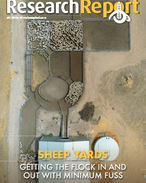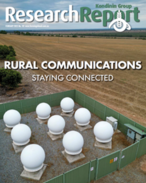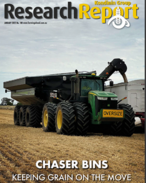Draper or belt fronts are now commonplace but there has been a resurgence in auger or ‘tin’ fronts, albeit in some cases with the addition of an extendable table.
It was only a few years ago Claas introduced its Vario front, which could be extended or retracted at the table floor (including the cutterbar) but now these types of fronts are offered by John Deere, Case IH and New Holland.
The ability to extend the front table allows for some flexibility when it comes to harvesting thick and ropey crops such as canola. As front technology gets better, for example being able to extend and retract the table from the harvester cab, so does the ability to harvest more efficiently. Several graingrowers have enjoyed the use of this type of front on their properties as it allows them to direct head canola far more efficiently than if the crop is swathed or windrowed.
Kondinin Group researchers have had a close look at these new fronts as well as a few other developments including a new Air Flex front from Honey Bee, which uses air bags to vary how rigid or flexible the front is and the Shelbourne Reynolds stripper front.
Flexible or flex fronts have come to the fore recently with their ability to follow the contours of the ground, which makes them ideal for harvesting crops such as lentils and other high value crops.
The Air Flex front can be run as either as flex or rigid front which again provides flexibility when it comes to investing serious dollars into machinery.
Once favoured for crops such as rice, Shelbourne Reynolds stripper fronts are now far more mainstream, and finding favour with no-till farmers.
One of the key benefits when harvesting cereals with a stripper front is they simply strip the head off the crop, leaving the stalk behind and reducing the amount of material that needs to be processed by the harvester. This in turn allows the harvester to run at a faster ground speed but it can also lead to stubble management issues.





















